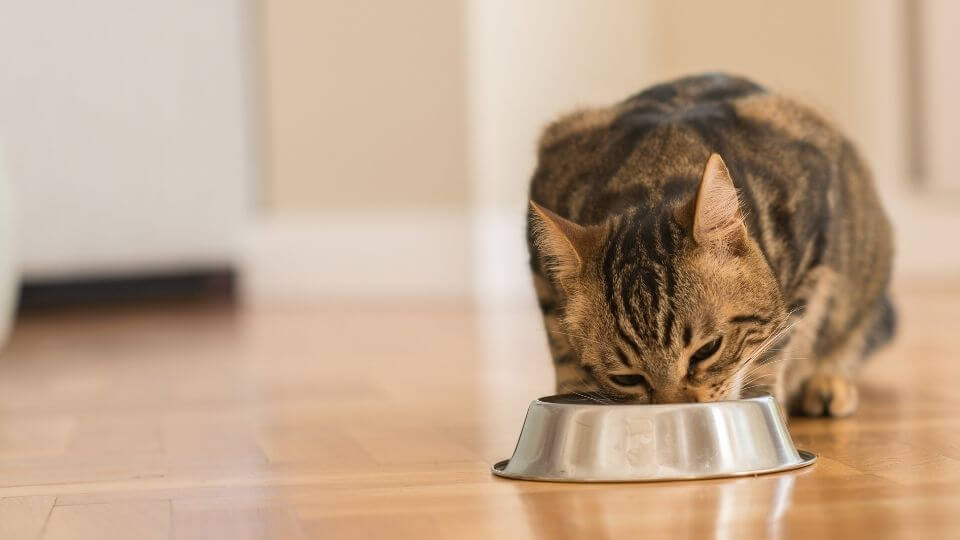
To get better insights into the habits, preferences and attitudes cat owners have regarding cat food, we partnered with Yummypets to conduct a survey on cat food purchases and buyer preferences. Here are the results.
The cat owners consulted for this study predominantly feed their cats a combination of dry and wet cat food (67%). A small minority (13%) give their cats exclusively wet food. French cats, in particular, are most likely to be on a ‘wet food only’ diet.
Dry food only
On the other hand, 9% of cat owners have their cats on a ‘dry food only’ diet. Both younger owners and those residing in the US & Canada are more likely to be part of this group. The remainder (11%), feed their cats a combination of cat food and other types of food (like pieces of ham, tuna and more).
Brand loyalty and trust
Cats are finicky eaters, so sometimes sticking to the same brand is the easiest way to keep a cat satisfied. And that’s what 40% of cat owners do. Others (37% of owners) like to experiment and continuously look for new flavors or brands their cat might enjoy even more. UK cat parents are most likely to vary the brands and flavors they buy.
The interesting question here is if switching brands says something about how much trust cat owners have in the major brands. The vast majority (80%) indicate that they trust the major brands, with UK consumers being the most trusting. 21% of all cat owners even state that they fully trust the major brands.
On the other hand, 17% of cat owners have their doubts about major brands, and 3% state that they don’t trust them at all. French cat owners appear to be the most hesitant about trusting major brands.
Where do they buy?
Cat owners are notorious for buying their food products in the supermarket. This study confirms that the vast majority (69%) still do so. UK and US consumers, in particular, are more likely to be supermarket buyers.
The second leading channel is online (28%), while pet specialty retail is a close third (23%). The group of 25- to 54-year old’s do most of their cat food purchases online. Canadian cat owners buy online the least and are more likely to buy in pet retail stores. Around 13% of cat owners buy their food in veterinary clinics.
Feeding habits
When it comes to feeding, most cat owners prefer to give their cats food throughout the day. 30% of respondents free-feed their cats so they can eat whenever they want. Elderly owners are more likely to be part of this group. Also, French cat owners prefer free feeding, while UK consumers do so least often.
Most people feed their cats twice per day (39% of all respondents), while 22% feed their cats 3 or more times a day. Only 8% of cats get their food once a day.
Taste and quality versus health
What aspects are most important to cat owners when it comes to feeding their cats? It appears that it is not whether the cat likes the taste (21%), or whether the food is high-quality (15%). Rather, what is important is whether the food is good for their cat’s health; that is key for most cat owners (54%). However, 62% of owners find it difficult to choose a product that matches their cat’s nutritional or health needs.
UK and US owners are most concerned about the taste of the food and if their cat likes it or not, French the least. For French owners, it’s most important that the cat food is beneficial for their cat’s health.
Aspects like whether the cat eats enough to satisfy its hunger (7%) or whether it eats a variety of ingredients (3%) seem less important to all respondents.
Purchasing decisions
When choosing which brand or product to buy, there are many factors that cat owners need to consider. For starters, the sheer choice in products makes it difficult for owners (57%) to choose.
However, the most important factor in the purchasing decision, for 49% of cat owners, is the quality of ingredients. At the same time, 66% of respondents find it difficult to determine whether the ingredients used are beneficial for their cat’s health. And 69% of them find it difficult to ensure that the quality of ingredients is as good as it should be. The origin of the ingredients, on the other hand, only seems important to a very small group (6% of the total).
The second most important factor seems to be the brand (for 44% of owners). Yet, most owners (57%) find it difficult to pick a good brand. US owners tend to be guided more by the brand in their purchasing decisions, than owners in other countries.
36% of owners look at whether the food is appropriate for the age of the cat. As for price, that is important for 34% of respondents. UK cat owners are influenced by price the most, whereas French consumers care a little less about price. In the same vein, UK owners tend to look for age-appropriate food more often than owners in other countries, while US and Canadian owners find this aspect of small importance. About one in five owners in Canada and France base purchasing decisions on recommendations from their vets. Only one in ten owners do so in the UK and the US.

Labels
Factors that influence the number of cat owners the least are hypo-allergenic labels, or organic and gluten- free labels. Products that mention they’re grain-free are important for 12% of respondents, predominantly in France and Canada.
While there is talk of a trend towards shorter ingredient lists, only a small minority of this survey’s respondents (8%) considered this factor as playing a contributing role.
Interestingly, health claims appear of less importance for most owners. One-fifth choose products with digestion benefits and 15% indicate their choice of cat food is based on its claim to be beneficial for specific health problems, like kidney failure allergies, and more. 14% of cat owners have a penchant for products that offer skin and coat benefits.
Health benefits
When asked which health benefits are most important in purchasing decisions, healthy digestion (60%), immunity strengthening (54%), urinary problem prevention (52%) and obesity prevention (50%) top the list.
Cognitive function improvement (10% of owners), improved vision (13%) and allergy prevention (16%) are least cited as important health benefits.
Alternative proteins
How willing are cat owners to explore alternatives for animal protein?

Answers to this question are tight across the board. The largest group (38%) indicates they’re not sure whether they want to feed their cat with food based on alternative sources of protein.
A fourth of the cat owners have strong convictions: 17% would be willing to drop animal proteins from their cat’s diet, whereas 8% would not. British cat owners and the younger generations are most open to the idea. French respondents take to the idea of alternative protein the least, while elderly respondents are much less outspoken on this topic.
To treat or not to treat?
Dogs are clearly not the only pets that are pampered with treats. Only 17% of cat owners indicate that they never give their cats any treats. The majority state that they give a treat every day (36%) or once a week (22%). A sizeable group (16%) goes a step further and gives treats several times per day.

The French are the most likely to never give treats – which makes sense since they tend to free-feed their cats. Similarly, most elderly owners never give treats.
The 3 most popular types of treats categories for cat owners are crunch treats (53%), dental treats (22%), and catnip or cat grass (21%). Homemade treats, natural treats, and cat milk appear the least popular.
A total of 1,776 pet owners from Canada, France, the UK, and the US responded to the survey.
Special thanks to Yummypets
The latest articles

How pet parents will shop for their pets this Christmas
A new survey takes the pulse on holiday shopping trends in the UK, including popular categories and average spending.

General Mills’ pet portfolio posts negative performance
Both revenue and net sales dropped by 4% in the last quarter amid less demand.

Negotiations of new EU rules on sustainable packaging to kick off in 2024
The Council and the Parliament will start the legislative process to design regulations regarding the packaging and packaging waste proposal put forward by the European Commission last year.
Weekly newsletter to stay up-to-date
Discover what’s happening in the pet industry. Get the must-read stories and insights in your inbox.